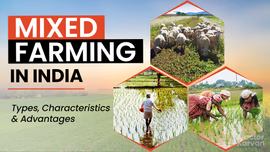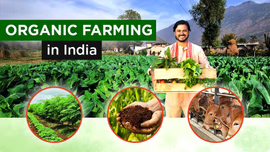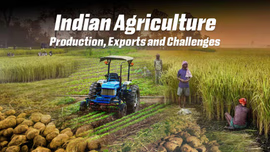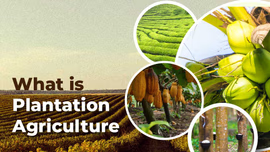Rice Cultivation in India: Methods, Machinery and Best Practices

Rice cultivation is practiced on a large scale across India. With varying terrains, rainfall patterns and cultures, different regions have adopted different methods of rice cultivation. The primary rice cultivation methods are traditional, direct seeded rice and SRI. Go through this article to understand these methods in detail. Also, you can learn more about the machinery used in rice cultivation, which makes the process more convenient and hassle-free.
Table of Contents
- What is the Status of Rice Cultivation in India?
- What are the Different Sowing & Planting Methods in Rice Cultivation?
- What Machinery is Used in Rice Cultivation?
- What are the Advantages of Using Machines in Rice Cultivation?
- Conclusion
What is the Status of Rice Cultivation in India?
Rice is among the most widely grown grain crops in India because it is a staple food for the entire population. Only China is ahead of India in rice production worldwide. During 2023-24, total rice production was around 1132 lakh metric tonnes (LMT) . Also, as per the First Advance Estimates, the total Kharif rice production is expected to be 1199.34 LMT for 2024-25 . Different varieties of rice are grown in India and have unique tastes, aromas, and sizes. Basmati, Ambemohar and Kalanamak are some popular examples.
Rice is mainly cultivated in tropical and rain-fed regions, and top rice-producing states in India include Uttar Pradesh, Telangana and West Bengal. Farmers across the country undertake different rice cultivation practices based on factors like terrain, scale of cultivation, water availability and cultural influence. In addition, modern cultivation methods have emerged that promise less water wastage and higher yield.
What are the Different Sowing & Planting Methods in Rice Cultivation?
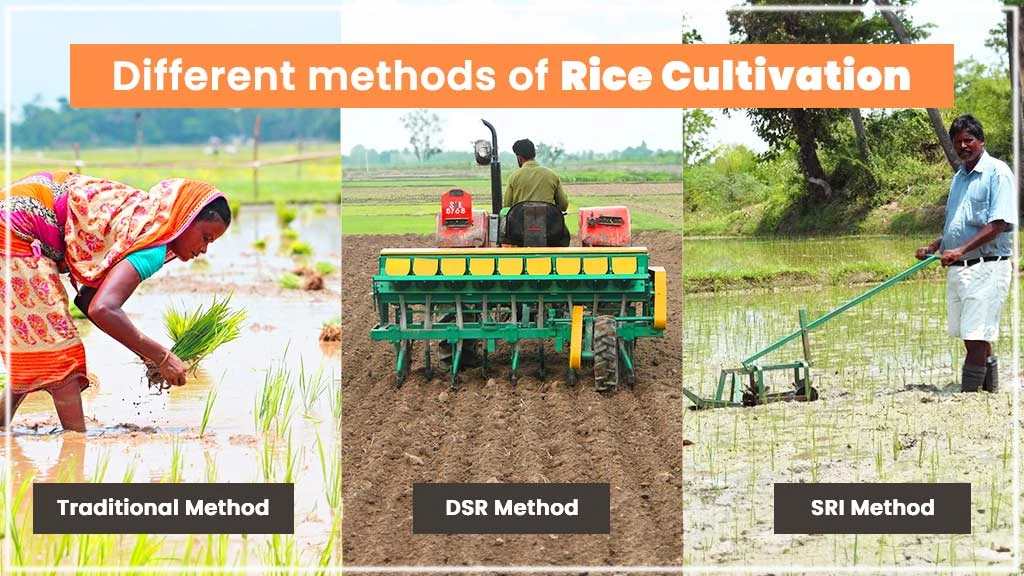
Traditional Method
The traditional rice cultivation method is a common practice in India because of its cost efficiency. Also, it is well-suited for areas with high rainfall and low labour costs.
The steps involved in this method are:
- First, the field is ploughed, and fertilizers, like cow dung, are applied.
- Second, the land is levelled so that water can be retained.
- Third, the field is flooded after young seedlings have been set or while setting them.
- Fourth, the rice plantation is done manually via broadcasting or transplanting.
This method demands effective water damming and channelling to prevent weed growth. The field is kept submerged in water during the growing season.
Direct Seeded Rice (DSR) Method
DSR involves sowing rice seeds directly into the ground instead of transplanting the seedlings. A seed drill is used to sow these seeds into the soil directly at uniform depth and spacing. Due to uneven soil, seed drill operations may become limited, resulting in poor crop establishment. This is why a land leveller is used before sowing to ensure a uniform surface. Crop establishment can be improved by priming rice seeds with water and Potassium chloride (KCl).
DSR is mainly done in two ways:
- Dry direct-seeded rice: In dry seeding, the sowing of dry seeds is practised in the unpuddled soil. It uses dry seeds without prior germination. This method is common in areas where water and labour are scarce. Its main benefits include reduced methane emissions, low labour requirements and high water savings. Also, there is improved seedling emergence along with a lower risk of crop lodging. However, weed control is a major challenge in the dry seeding method.
- Wet direct-seeded rice: Sowing pre-germinated rice in the puddled soil comes under the wet direct-seeded method. This method is recommended when monsoon rains are late. Farmers can sow the sprouted seeds in a timely manner in irrigated fields. The wet seeding method enhances water productivity.
System of Rice Intensification (SRI) Method
The SRI rice cultivation method is becoming popular among farmers as it effectively manages resources like water, labour, seeds, and land. Rather than a technology, it is a methodology or set of management practices that work to increase the crop yield with fewer resources.
The necessary conditions in the SRI method are:
- Perfect soil levelling is necessary for this method to avoid waterlogging conditions. Puddling in rice farming is done to break up the clods while churning the soil. A well-puddled field is marked to lay out the area into wide spacing.
- Single and young seedlings (8-12 days old) are planted with care using the index finger and thumb at the intersects of puddled field.
- Rice plants are more widely spaced (25 cm x 25 cm), and they do not need continuous flooding of fields.
- Power weeder or cono-weeder is used for soil aeration and weed control.
- Also, the SRI method facilitates the use of farmyard manure, organic manure or vermicompost.
The SRI method is preferred because it encourages soil biotic activities in the root zone and uses fewer chemical inputs and seeds. Such practices not only save inputs significantly but also enhance yields. Overall, it ensures higher profits for rice cultivators.
What Machinery is Used in Rice Cultivation?
The use of machinery has made rice cultivation easier and more productive. Some of the important machineries used in paddy cultivation are seed drill and rice transplanters. Let us see one by one.
Seed Drill
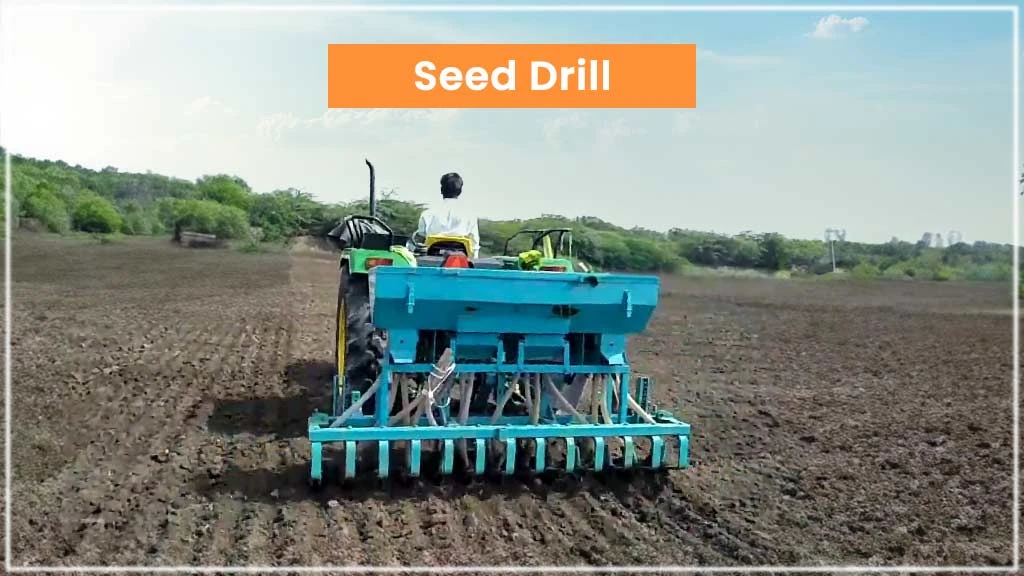
A seed drill is an important machinery used for the direct sowing of rice in fields. Some popular types of seed drills for direct seeding are inverted zero till drills, conventional seed cum fertilizer drills and machines with vertical or inclined plate metering mechanisms.
One of the main benefits of using a seed drill is that it minimizes seed breakage while maintaining uniform spacing between seeds and rows. The recommended depth to sow seeds via dry DSR is 2 to 3 cm. In the case of pre-sowing irrigation, the sowing depth is 3 to 5 cm. The ideal inter-row distance is 20 cm.
Manual Rice Transplanter
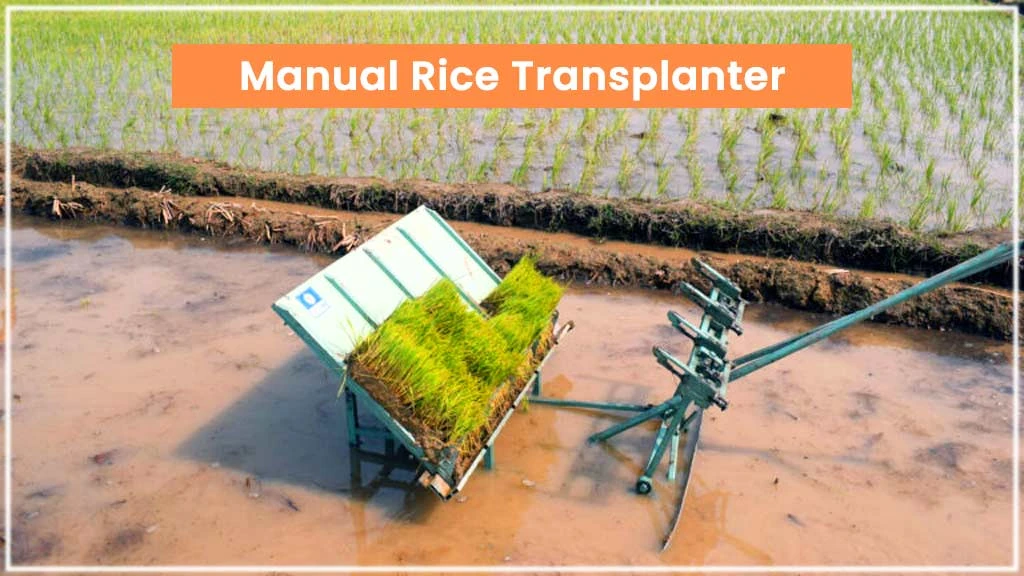
A manual rice transplanter is operated by hand to transplant rice seedlings manually. It is usually ideal for hilly areas and small to medium-sized fields. This compact machine can plant multiple rows simultaneously and thus comes in different sizes, like 2 rows and 4 rows.
In a walk-behind rice planter, the machine moves forward while the operator walks behind to guide it across the field. When the handle is pressed, seedlings are picked up by forks to be planted in rows. So, the operator needs to punch the handle at the desired spacing while pulling the machine. This is why it can be a two-person task.
This machine needs high manual labour and more time; thus, it is not suitable for large rice fields.
Self-propelled Rice Transplanter
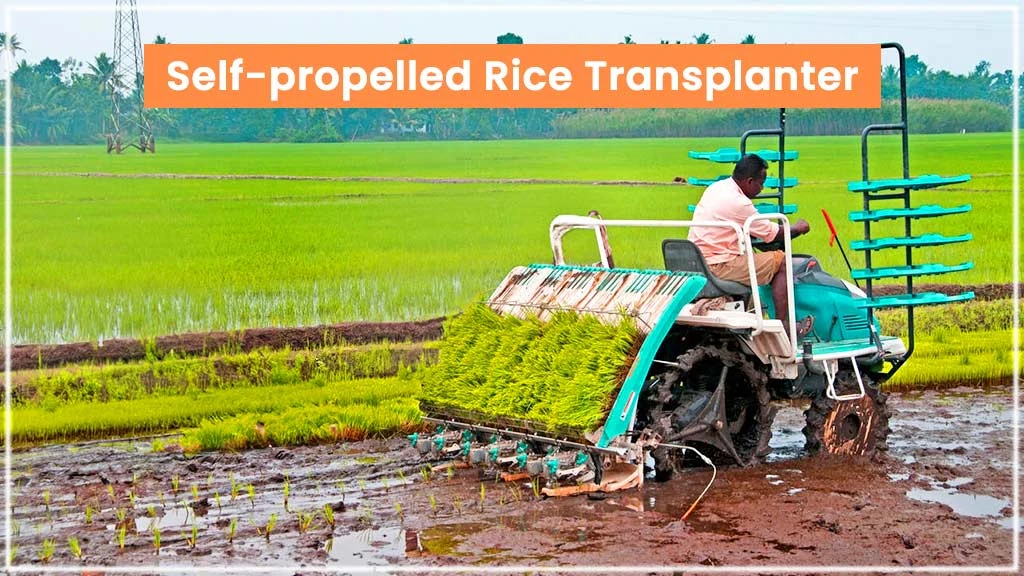
One of the most modern machineries for rice plantation is a self-propelled rice transplanter. This machine has an engine of its own to move in the field, and this does not need manual force by the operator. Mat-type rice seedlings can be easily transplanted in puddled soil with this machine.
This machine offers high efficiency with features like automatic hydraulic levelling control. Also, it is easy to operate and operates faster and stronger in deep fields. Further, the transplanting depth can also be adjusted. It saves a significant amount of time and labour in comparison to manual transplanting.
The top brands offering such rice transplanters in India are Kubota and Mahindra. Some popular rice transplanter models are Kubota NSP 4W, Mahindra Planting Master Paddy 4RO and Mahindra MP461.
What are the Advantages of Using Machines in Rice Cultivation?
Traditionally, farmers have been using manual transplanting by hand to plant rice. It makes the entire process highly laborious and time-consuming. In addition, consistent crop spacing is challenging to achieve with hands, leading to unoptimized resource utilization and uneven growth. Compared to the traditional method, there are certain advantages of using machineries in rice cultivation. These are:
- Rice transplanting machines automate the process altogether.
- They offer higher productivity by covering more areas in less time.
- These machines make accurate and precise planting possible to ensure improved plant health, growth and yield.
- Also, manual labour dependency reduces to lower labour costs.
Overall, rice transplanter machines offer a wide range of benefits over manual transplanting, making them a competent alternative.
Conclusion
Rice cultivation is a common practice across India. Different methods of rice plantation are used in different regions. However, as labour and water are becoming expensive and limited resources, it is important to adopt methods that use them efficiently. In addition, self-propelled rice transplanters are effective machines that save time and labour while preventing seed waste. If you want to buy a rice transplanter to increase your productivity, explore Tractorkarvan now. Here, you will find a wide variety of rice transplanter models that can match your field requirements. Also, check out our article on top puddling special tractors in India to choose a suitable tractor for your farm.


Related Blogs
